ESIF Stewardship Summary 2023
The Energy Systems Integration Facility (ESIF) is a U.S. Department of Energy (DOE) user facility for communities, companies, and entire countries to accelerate their energy strategy.
Directors' Note
As DOE Field Officer Derrek Passarelli said at our ESIF 10-year anniversary celebration in August, "Everything about the ESIF is looking forward," and we couldn't agree more. ESIF's forward-looking visitors in 2023 included the U.S. Secretary of Energy, the governor of Colorado, industry executives, and international delegations. Our partners depend on this facility for its stand-out capabilities—like the newly installed high-performance computer Kestrel—and for the professional support of the operations team. The Advanced Research on Integrated Energy Systems (ARIES) platform has allowed us to push the edge of large system experimentation. We look forward to seeing the scale of transformation we'll achieve in the next 10 years!
Juan Torres, Associate Laboratory Director
Jerry Davis, Laboratory Program Manager
Chad Blake, Research Operations Director
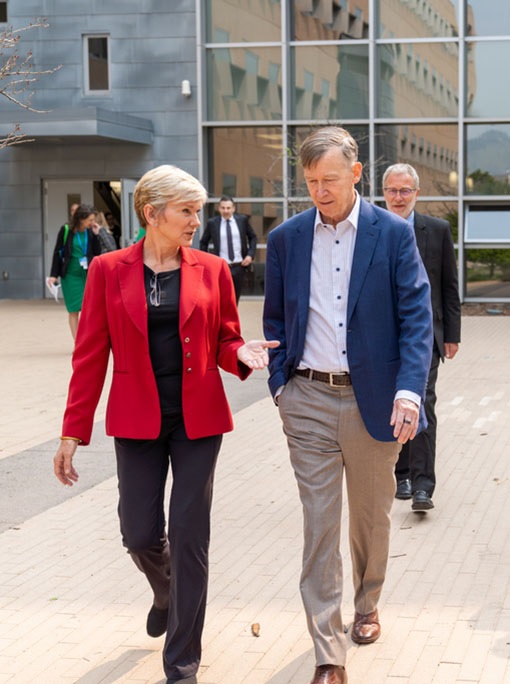
Facility Metrics at a Glance
R&D Impact
Cybersecurity Accelerator Completes First Cohort
The Clean Energy Cybersecurity Accelerator™ program moves emerging cybersecurity technologies into the market by demonstrating and evaluating them in groups, or cohorts, defined by utilities' prioritized threats or solution gaps. Three companies recently completed the inaugural cohort, which focused on authentication and authorization solutions for industrial control systems. NREL researchers performed the technical assessments using the ARIES Cyber Range.
Sponsors: DOE Office of Cybersecurity, Energy Security, and Emergency Response with Berkshire Hathaway Energy, Duke Energy, and Xcel Energy
ESIF resource: ARIES Cyber Range
DC-Hub for High-Power Electric Vehicle Charging Research Forms in the ESIF
Most high-powered chargers today are designed to be supplied from an alternating current (AC) connection, with conversion to direct current (DC) in a stand-alone charger. Integrating the chargers into a DC distribution-based hub—DC-hub for short—has benefits in reduced cost, increased efficiency, and simplified controls since all EV chargers and other distributed energy resources can interconnect with fewer conversion stages. Using a DC-hub built at the ESIF, researchers have charged EVs via power-sharing controls and integrated emulated energy storage to demonstrate the resilience and interoperability of the DC-hub.
Sponsor: DOE Vehicle Technologies Office EVs@Scale Consortium
ESIF resource: Electric Vehicle Research Infrastructure Evaluation Platform
Improving Distribution System Resilience via Deep Reinforcement Learning
When extreme events happen, grid operators rely on automated controls to take a sequence of fast, correct, and coordinated actions to minimize the damage and restore power. NREL researchers found that a controller trained using a type of machine learning called curriculum-based reinforcement learning could execute a faster and more robust response than traditional methods. Their recent journal publication demonstrates a state-of-the-art application of artificial intelligence to solve grid resilience challenges.
Sponsor: DOE Office of Electricity
ESIF resource: High-Performance Computing Data Center
De-risking Control Technologies for the Energy Transition With Eaton
Eaton leveraged the ESIF's three research homes to validate its next-generation residential demand response technology across various real-world scenarios. Eaton ran its meter-as-a-controller technology within a hierarchical control platform, which optimally coordinates residential solar, storage, HVAC, and electric water heaters to reduce utility load demand while maintaining quality of service for homeowners. The partnership's results showed the performance benefits and secure operation of Eaton's technology, serving as an important development milestone to pilot deployment in a utility network.
Sponsor: Eaton
ESIF resource: Systems Performance Laboratory
Technology Incubator Launches Smart Home Solution
The startup SPAN created a smart breaker panel for real-time circuit-level power consumption and control in a sleek design. Thanks to the Wells Fargo Innovation Incubator, SPAN was able to work with technical experts at the ESIF to validate and explore advanced functionality. The relationship led to a joint R&D research and development project to integrate the SPAN Panel with NREL's state-of-the-art energy management system, foresee™. The technology is now in a field test.
Sponsor: Wells Fargo Innovation Incubator and the DOE Building Technologies Office
ESIF resource: Systems Performance Laboratory
Crossover Testing With Chemours Improves Hydrogen Electrolyzer Performance
NREL researchers are working with chemical company Chemours to analyze and quantify hydrogen crossover—an unwanted process in which hydrogen permeates from one side of the cell to the other and is lost for harvesting. The team designed a hydrogen crossover diagnostic for operando experiments and has begun testing electrolyzer cells in ESIF to conduct characterization of Chemours developmental materials and commercial products. This work will lead to higher performing products with increased efficiency and safety features.
Sponsor: DOE Hydrogen and Fuel Cell Technologies Office, Chemours, and the DOE HydroGEN Consortium
ESIF resource: Fuel Cell Development Test Laboratory
Project Update: Landmark Microgrid Takes Next Step to 100% Clean Energy Using Hydrogen Storage
The Borrego Springs microgrid in California will soon add hydrogen storage—a critical resource that will allow the microgrid to run on 100% renewable energy for days. The project team has launched into cost and technical analyses, identifying the optimal configuration, controls, and specifications for the San Diego Gas & Electric Company. Next steps will involve lab validations followed by field demonstrations.
Sponsor: DOE Hydrogen and Fuel Cell Technology Office
ESIF resource: Electrical Characterization Laboratory, Advanced Distribution Management System Test Bed
Capability Expansions
ESIF's third-generation high-performance computing system named Kestrel brings faster, more robust computing capabilities to NREL and the Office of Energy Efficiency and Renewable Energy.
The demonstration of a 'Superlab' combining the power of multiple research hubs and up to 10,000 research devices represents a massive leap in scale for research.
Advanced buildings controls validation capabilities will serve researchers, utilities, and control manufacturers in support of BTO's Control Product Performance Evaluation and Reporting initiative (CoPPER).
Two new 250-kW battery energy storage systems will serve research for modern microgrids, DC-connected vehicles and buildings, and more.
A new power electronics research capability propels prototypes from benchtop low voltage testing toward the distribution voltage level.
Two new combined heat and power multi-fuel microturbines are at the center of modern energy conversion and microgrid technology.
The ESIF's battery emulation capability was upgraded to 1.3 MW with various connection points across the facility.
The environmental chambers are being upgraded for extreme weather performance for R&D of heat pump technology in cold climates.
Upgraded 3D visualization in the Insight Center illustrates decision-making scenarios across large multidimensional data sets.
Partnerships and Engagement
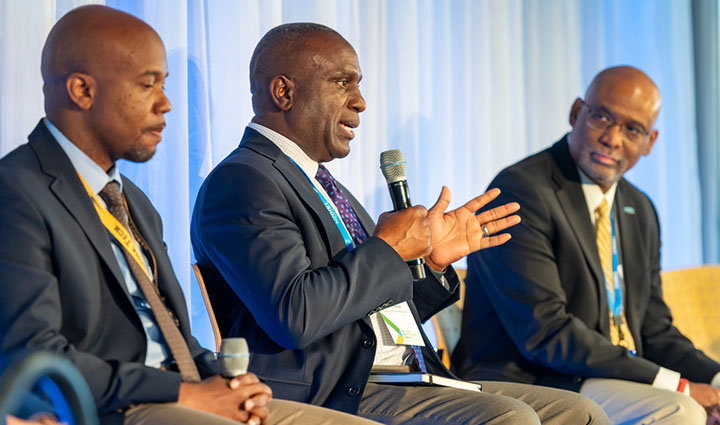
Forum Sparks Dialog Between Industry Leaders
The 7th annual NREL partner forum convened 90 attendees who shared their experiences and plans for energy systems integration across sectors. For example, Robert Horton from Dallas Fort Worth International spoke about the airport's experience in planning its energy transition using ARIES assets. Visitors also attended an anniversary party to celebrate 10 years of the ESIF.
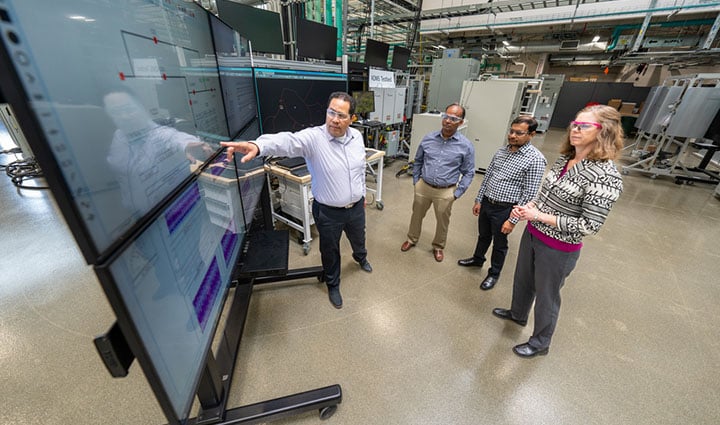
Grid Solutions Piloted on Distribution System Test Bed
When utilities and manufactures need to evaluate power distribution system management and controls, they come to the ESIF to leverage the vendor-neutral Advanced Distribution Management System Test Bed. In 2023, NREL launched projects with Shell, Spirae LLC, Electrical Grid Monitoring Inc., and the Israel Electric Corp. and began accepting proposals for new vehicle-grid integration projects.
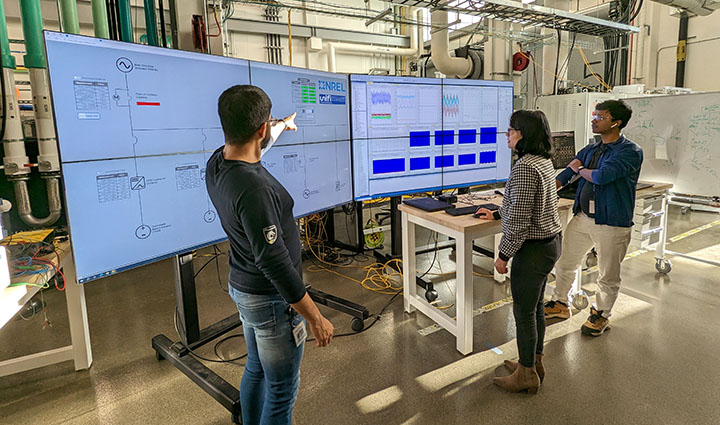
Inverter Technology Boosted by Diverse Consortium
Members of the Universal Interoperability for Grid-Forming Inverters (UNIFI) Consortium combine innovation efforts around power inverters—a necessary technology for operating a stable grid on 100% renewable energy. NREL is preparing for multi-megawatt inverters validations drafted by the consortium of research and industry partners, sponsored by the Solar Energy Technologies Office.
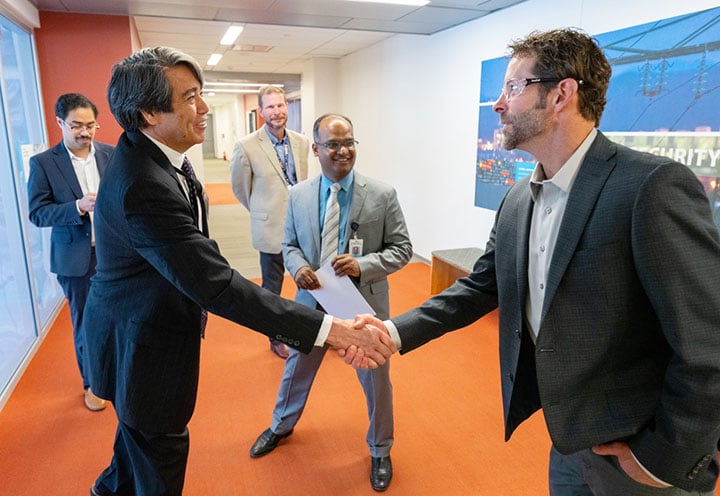
ESIF Welcomes Visitors to Witness Laboratory Innovation
The ESIF is an essential stop on any NREL campus tour. The facility saw more than 9,000 guests in 2023 including the U.S. secretary of energy, the Colorado governor and a Colorado senator, executive DOE leadership, directors of Advanced Research Projects Agency-Energy and the Defense Advanced Research Projects Agency, and Xcel Energy Colorado president in addition to industry leaders, international ministers, and local officials.
DOE Partners
- Advanced Materials and Manufacturing Technologies Office
- Advanced Research Projects Agency-Energy
- Bioenergy Technologies Office
- Buildings Technologies Office
- Office of Cybersecurity, Energy Security, and Emergency Response
- Federal Energy Management Program
- Grid Modernization Initiative
- Hydrogen and Fuel Cell Technologies Office
- Office of Electricity
- Office of Science
- Renewable Energy Grid Integration
- Strategic Programs
- Solar Energy Technologies Office
- Vehicle Technologies Office
- Water Power Technologies Office
- Wind Energy Technologies Office
Federal Partners
- Federal Aviation Administration
- Federal Emergency Management Agency
- U.S. Department of Defense
- U.S. Department of Homeland Security
- U.S. Forest Service
Academic Partners
- Cornell University
- Georgia Institute of Technology
- Rice University
- University of Colorado
- University of Delaware
- University of Washington
Industry and Nonprofit Partners
- 1s1 Energy
- 3M
- ABB
- Active Energy Systems
- Addenergie
- Air Liquide
- Alumina Energy
- Apple
- Analog Devices
- Bekaert
- Bennett Pump
- Blue Ridge Networks
- BMW
- BTC Power
- CARB
- ChargePoint
- CharIN
- Chemours
- Chevron
- Denso Ten
- Duke Energy
- Dioxide
- Eaton
- Electric Hydrogen
- Electricore
- Element One
- Emerson
- Eonti
- EPRI
- Electrify America
- EGM
- EVGo
- Exelon
- Fortescue Future Industries
- Ford
- Gas Technology Institute
- HECO
- Honda
- HPlus
- Hyundai
- Latimer Controls
- Leap PV
- Lubrizol
- Mainstream Engineering
- mCloud
- NEL
- NeoCharge
- NextEnergy
- Opus 12
- PARC
- PhiHong
- Plug
- PPG
- Resonant Link
- Rivian
- SAE
- Schaeffler
- SDG&E
- Shell
- Sierra Nevada Corp.
- SoCalGas
- Solid Power
- Span.io
- Spirae
- TCPoly Inc.
- TEPCO
- Toyota
- TreadStone
- Umicore
- Verne
- W.L. Gore
- Xage Security
- Xcel Enery
Technical Outputs and Publications
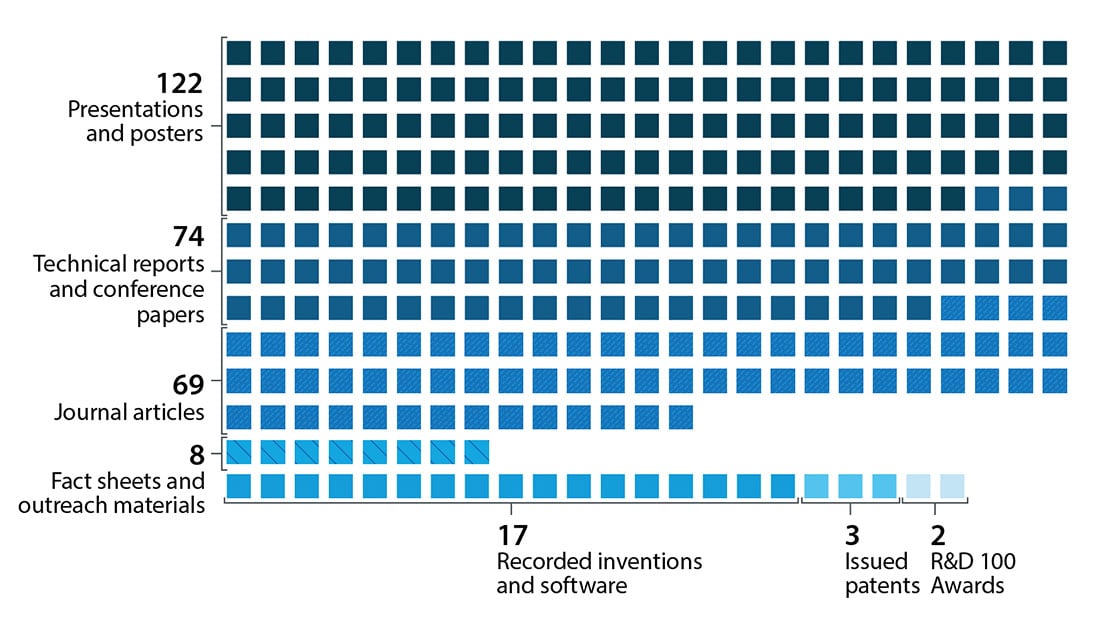
Top 10 Most Downloaded Publications
- Overview of Functional Technical Requirements for Intentional Islands
- Investigating Multi-Microgrid Black Start Methods Using Grid-Forming Inverters: Preprint
- Situational Awareness of Grid Anomalies (SAGA) for Visual Analytics: Near-Real-Time Cyber-Physical Resiliency Through Machine Learning
- Resilient Inverter-Driven Black Start With Collective Parallel Grid-Forming Operation: Preprint
- Hydropower Cybersecurity Value-at-Risk Framework
- A Hydrogen Load Modeling Method for Integrated Hydrogen Energy System Planning: Preprint
- Energy Resilient Recovery in Puerto Rico: Hurricane Maria Recovery Support
- Cyber-Physical Security and Resiliency Analysis Testbed for Critical Microgrids With IEEE 2030.5: Preprint
- Distributed Energy Resource Visual Emulator: Phase 1
- Critical Energy Cybersecurity AcceleratorCohort 1: Authentication and Authorization
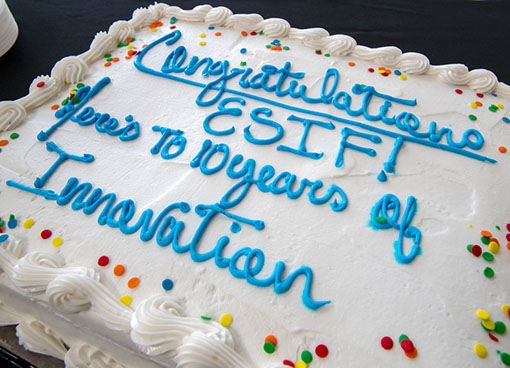
Our Thank You
The research in this summary is the result of outstanding work by so many individuals across organizations. Thank you to the ESIF researchers, operations team, and external users who achieved another year of innovations; and thank you to DOE leaders who continue to champion breakthrough science. This summary captures only a snapshot of your progress at the ESIF this year.
Learn more about the NREL facilities that make ESIF research possible.
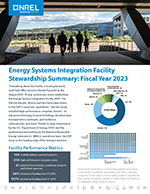
Download
Download the executive summary of the ESIF Fiscal Year 2023 accomplishments.
Visit ESIF for more information about NREL's Energy Systems Integration Facility. Subscribe to the Energy Systems Integration newsletter to receive monthly research updates to your email.
Share
Last Updated March 7, 2025
